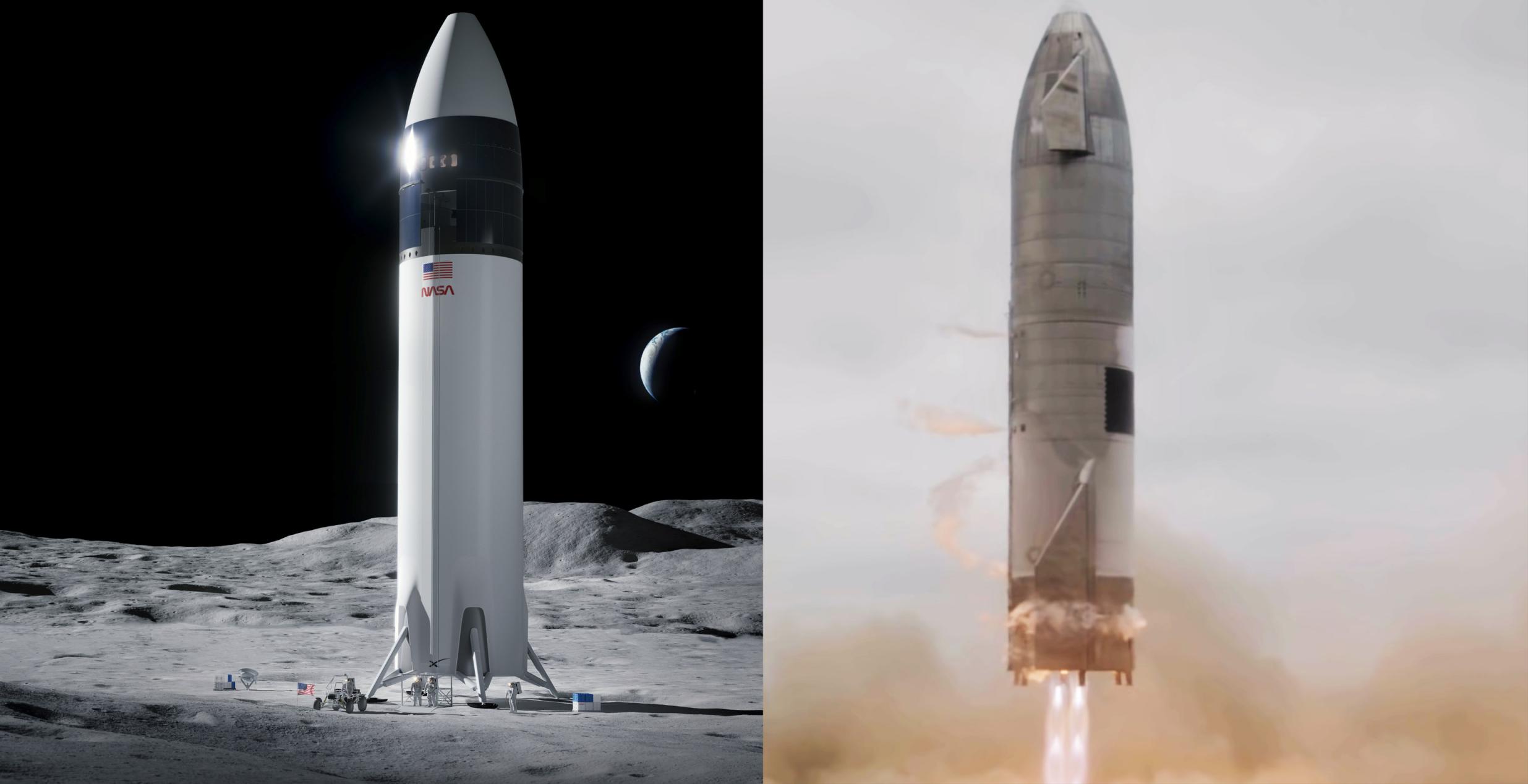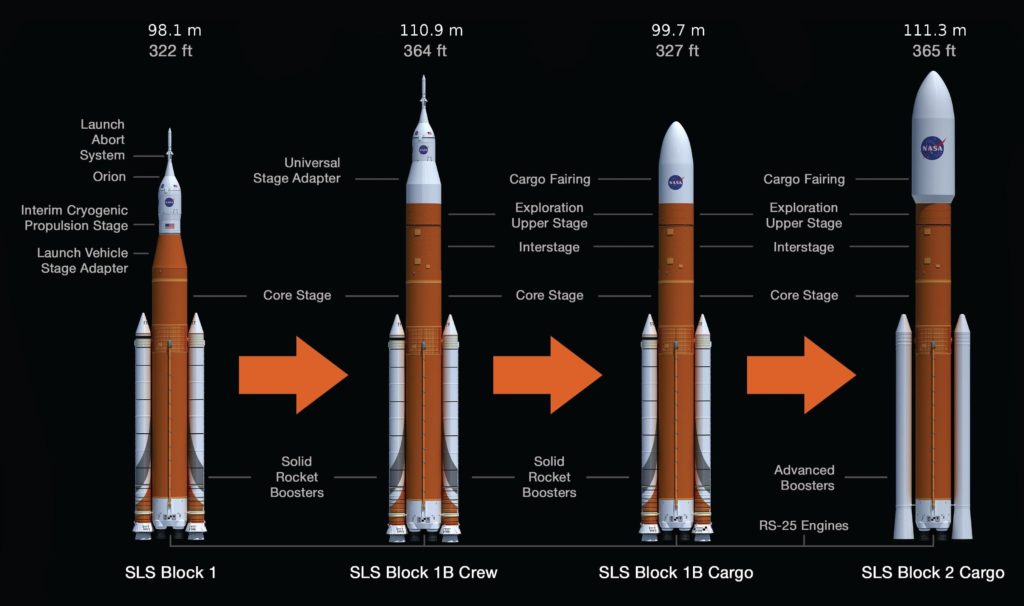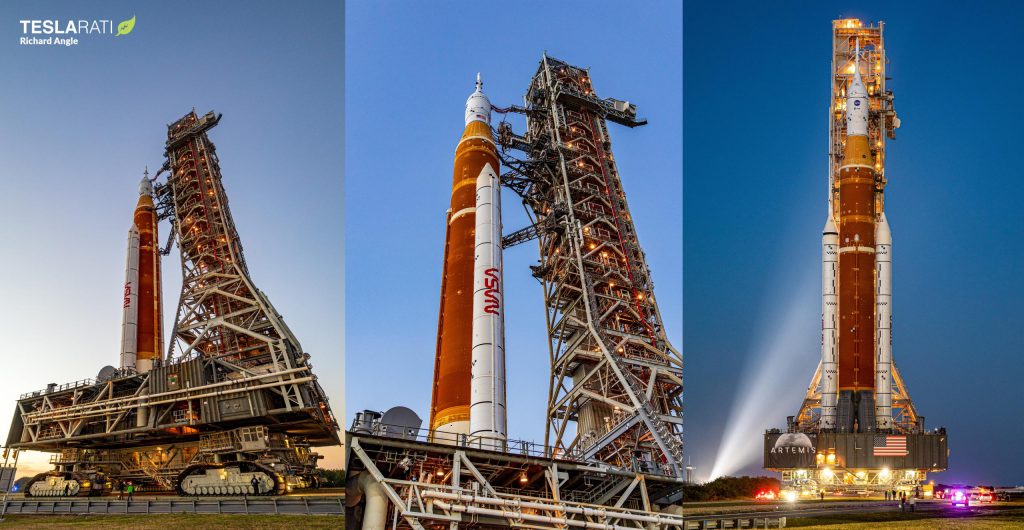

News
NASA contracts SpaceX for a second crewed Starship Moon landing
NASA says it exercised a contract option to purchase a second crewed Starship Moon landing from SpaceX.
Aside from its general existence, though, very little else is known about the new contract. NASA has yet to discuss when it will launch or which Artemis mission it will be attached to. A step further, it’s not actually clear why two crewed “demonstrations” are needed or what the difference between those two missions is. But more importantly, a broader Artemis Program manifest overview published days later revealed that NASA has plans for a truly unusual gap in crewed Moon landings in the mid-2020s.
Mere days after the announcement, an official NASA schedule showing the agency’s plans for the Moon and Mars over the next ten years explicitly contradicted it, showing only two Starship HLS demonstrations: one uncrewed and one crewed. Assuming that was simply a matter of poor coordination, the graphic reveals another bizarre reality: NASA appears to be explicitly planning for a three-year gap between SpaceX’s first crewed Starship landing in 2025 and the next crewed Moon landing, which the graphic suggested might occur in 2028.
Every single crewed Apollo Program mission to the Moon – including one aborted circumlunar mission, two missions to lunar orbit, and six successful landings – happened in less than four years. As published, NASA’s current Artemis plan would be akin to completing Apollo 11 – the first crewed Moon landing – in 1969 and then sitting around and waiting until 1972 for the next landing attempt. It’s difficult to properly convey just how bizarre such a huge gap would be.
There are only two obvious possible explanations. First, NASA might prefer a multi-year delay between crewed Moon landings to building and launching another SLS Block 1 rocket, in which case the three-year landing gap is explicitly the fault of years of SLS Block 1B delays – specifically NASA and Boeing’s work on the rocket’s larger Exploration Upper Stage (EUS). Second, it could be the case that NASA and/or SpaceX expects Starship’s first crewed landing to be delayed by one or several years. In 2018, SLS Block 1B was expected to debut as early as 2024. In 2022, NASA now says Block 1B will debut no earlier than 2027, while the last Block 1 launch is NET 2025.

The first explanation is arguably much likelier given that structuring schedules based on the assumption of delays would make very little logistical sense. If SpaceX were to be ready on or close to the original schedule, that would leave NASA’s Moon landing program sitting on its hands for a third of a decade. In an alternative scenario, if NASA was planning to take full advantage of every year it has and SpaceX’s Starship demonstration was still delayed, the space agency would simply end up with more SLS and Orion hardware on hand than it planned for – only a problem if the rocket is literally incapable of launching more than once every year or two. There are few conceivable scenarios where having a mission waiting on a rocket would be preferable to having a rocket waiting for a mission
In other words, NASA probably doesn’t want to plan for a three-year gap between crewed Moon landings. Rather, the anchor NASA has chained the Artemis Program to – SLS and Orion – is likely giving it no choice in the matter. Worse, if SLS Block 1B and EUS development are as poorly managed as SLS Block 1, it’s possible – if not likely – that Artemis IV and V will slip another year or two. As a result, even in the likely scenario that SpaceX’s crewed HLS demonstration runs into a year or so of delays, there could still be a three or even four-year gap between crewed NASA Moon landings right when the program should be getting up to speed.
SpaceX, meanwhile, is privately developing Starship with the ultimate intent of landing humans on Mars. Without NASA’s interest and support, the Moon is a distraction from SpaceX’s real goals. Additionally, through NASA’s Human Landing System (HLS) program, SpaceX will be providing Starship as a service, meaning that the company will retain full rights to and ownership of any system that results. Put simply, there’s a real possibility that NASA’s seemingly extraordinary lack of motivation will create a scenario in which SpaceX could outgrow the space agency’s usefulness in the mid-2020s.

If, for example, SpaceX privately human-rates Starship for launches and entry, descent, and landing; it could use the Starship HLS lander it’s developed with NASA to land its own astronauts on the Moon without the need for SLS, Orion, or NASA. Given that the full extent of NASA’s Artemis Program ambitions appears to be one Moon landing per year, there would be plenty of room for SpaceX to perform multiple additional landings independent of NASA while the space agency’s contractors struggle to build and launch a single SLS rocket in the same time-frame.
Given the political power behind the SLS/Orion programs, it’s not clear if NASA will ever be willing or able to publicly support or take advantage of that logical and likely inevitable maturation of SpaceX’s Starship HLS capabilities. A crewed Moon mission – and especially a crewed Starship landing – successfully completed without the need for SLS or Orion could put NASA’s unsustainable rocket and spacecraft in a very uncomfortable position. Already, the HLS program has relegated SLS/Orion to the role of an Earth-Moon taxi service that just so happens to cost more than $4 billion per launch.
Above all else, uncertainty continues to reign over NASA’s longer-term human spaceflight plans – helped in no small part by the space agency’s lack of any obvious overarching strategy. NASA officials may religiously repeat phrases about how the Artemis Program aims to “sustainably” return humans to the Moon and pave the way to landing astronauts on Mars, but that doesn’t change the fact that the agency’s tangible, funded plans show virtually no evidence of serious preparations for either goal. Only time will tell where that rudderless ship ends up.
News
Tesla begins Robotaxi certification push in Arizona: report
Tesla seems serious about expanding its Robotaxi service to several states in the coming months.

Tesla has initiated discussions with Arizona transportation regulators to certify its driverless Robotaxi service in the state, as per a recent report from Bloomberg News. The move follows Tesla’s launch of its Robotaxi pilot program in Austin, Texas, as well as CEO Elon Musk’s recent comments about the service’s expansion in the Bay Area.
The Arizona Department of Transportation confirmed to Bloomberg that Tesla has reached out to begin the certification process for autonomous ride-sharing operations in the state. While details remain limited, the outreach suggests that Tesla is serious about expanding its driverless Robotaxi service to several territories in the coming months.
The Arizona development comes as Tesla prepares to expand its service area in Austin this weekend, as per CEO Elon Musk in a post on X. Musk also stated that Tesla is targeting the San Francisco Bay Area as its next major market, with a potential launch “in a month or two,” pending regulatory approvals.
Tesla first launched its autonomous ride-hailing program on June 22 in Austin with a small fleet of Model Y vehicles, accompanied by a Tesla employee in the passenger seat to monitor safety. While still classified as a test, Musk has said the program will expand to about 1,000 vehicles in the coming months. Tesla will later upgrade its Robotaxi fleet with the Cyercab, a two-seater that is designed without a steering wheel.
Sightings of Cybercab castings around the Giga Texas complex suggests that Tesla may be ramping the initial trial production of the self-driving two-seater. Tesla, for its part, has noted in the past that volume production of the Cybercab is expected to start sometime next year.
In California, Tesla has already applied for a transportation charter-party carrier permit from the state’s Public Utilities Commission. The company is reportedly taking a phased approach to operating in California, with the Robotaxi service starting with pre-arranged rides for employees in vehicles with safety drivers.
News
Tesla sets November 6 date for 2025 Annual Shareholder Meeting
The automaker announced the date on Thursday in a Form 8-K.

Tesla has scheduled its 2025 annual shareholder meeting for November 6, addressing investor concerns that the company was nearing a legal deadline to hold the event.
The automaker announced the date on Thursday in a Form 8-K submitted to the United States Securities and Exchange Commission (SEC). The company also listed a new proposal submission deadline of July 31 for items to be included in the proxy statement.
Tesla’s announcement followed calls from a group of 27 shareholders, including the leaders of large public pension funds, which urged Tesla’s board to formally set the meeting date, as noted in a report from The Wall Street Journal.
The group noted that under Texas law, where Tesla is now incorporated, companies must hold annual meetings within 13 months of the last one if requested by shareholders. Tesla’s previous annual shareholder meeting was held on June 13, 2024, which placed the July 13 deadline in focus.
Tesla originally stated in its 2024 annual report that it would file its proxy statement by the end of April. However, an amended filing on April 30 indicated that the Board of Directors had not yet finalized a meeting date, at least at the time.
The April filing also confirmed that Tesla’s board had formed a special committee to evaluate certain matters related to CEO Elon Musk’s compensation plan. Musk’s CEO performance award remains at the center of a lengthy legal dispute in Delaware, Tesla’s former state of incorporation.
Due to the aftermath of Musk’s legal dispute about his compensation plan in Delaware, he has not been paid for his work at Tesla for several years. Musk, for his part, has noted that he is more concerned about his voting stake in Tesla than his actual salary.
At last year’s annual meeting, TSLA shareholders voted to reapprove Elon Musk’s compensation plan and ratified Tesla’s decision to relocate its legal domicile from Delaware to Texas.
Elon Musk
Grok coming to Tesla vehicles next week “at the latest:” Elon Musk
Grok’s rollout to Tesla vehicles is expected to begin next week at the latest.

Elon Musk announced on Thursday that Grok, the large language model developed by his startup xAI, will soon be available in Tesla vehicles. Grok’s rollout to Tesla vehicles is expected to begin next week at the latest, further deepening the ties between the two Elon Musk-led companies.
Tesla–xAI synergy
Musk confirmed the news on X shortly after livestreaming the release of Grok 4, xAI’s latest large language model. “Grok is coming to Tesla vehicles very soon. Next week at the latest,” Musk wrote in a post on social media platform X.
During the livestream, Musk and several members of the xAI team highlighted several upgrades to Grok 4’s voice capabilities and performance metrics, positioning the LLM as competitive with top-tier models from OpenAI and Google.
The in-vehicle integration of Grok marks a new chapter in Tesla’s AI development. While Tesla has long relied on in-house systems for autonomous driving and energy optimization, Grok’s integration would introduce conversational AI directly into its vehicles’ user experience. This integration could potentially improve customer interaction inside Tesla vehicles.
xAI and Tesla’s collaborative footprint
Grok’s upcoming rollout to Tesla vehicles adds to a growing business relationship between Tesla and xAI. Earlier this year, Tesla disclosed that it generated $198.3 million in revenue from commercial, consulting, and support agreements with xAI, as noted in a report from Bloomberg News. A large portion of that amount, however, came from the sale of Megapack energy storage systems to the artificial intelligence startup.
In July 2023, Musk polled X users about whether Tesla should invest $5 billion in xAI. While no formal investment has been made so far, 68% of poll participants voted yes, and Musk has since stated that the idea would be discussed with Tesla’s board.
-

 Elon Musk1 week ago
Elon Musk1 week agoTesla investors will be shocked by Jim Cramer’s latest assessment
-

 Elon Musk3 days ago
Elon Musk3 days agoElon Musk confirms Grok 4 launch on July 9 with livestream event
-

 Elon Musk16 hours ago
Elon Musk16 hours agoxAI launches Grok 4 with new $300/month SuperGrok Heavy subscription
-

 News7 days ago
News7 days agoTesla Model 3 ranks as the safest new car in Europe for 2025, per Euro NCAP tests
-

 Elon Musk2 weeks ago
Elon Musk2 weeks agoA Tesla just delivered itself to a customer autonomously, Elon Musk confirms
-

 Elon Musk1 week ago
Elon Musk1 week agoxAI’s Memphis data center receives air permit despite community criticism
-

 Elon Musk2 weeks ago
Elon Musk2 weeks agoTesla’s Omead Afshar, known as Elon Musk’s right-hand man, leaves company: reports
-

 News2 weeks ago
News2 weeks agoXiaomi CEO congratulates Tesla on first FSD delivery: “We have to continue learning!”

















